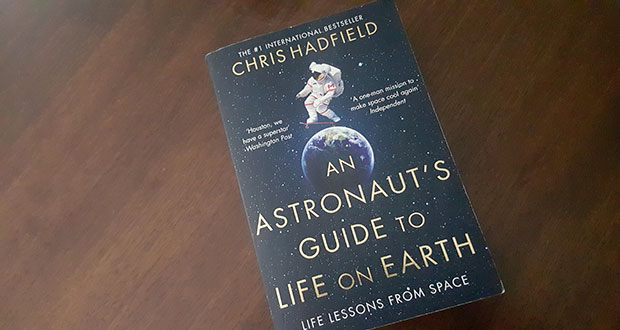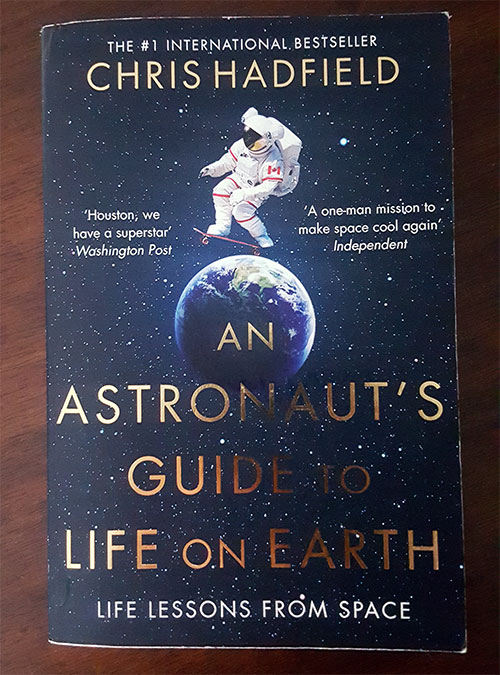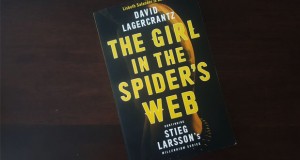“The windows of a spaceship casually frame miracles…”
A couple of years ago, I was one of the millions of people around the world that checked out the video clip of Colonel Chris Hadfield singing David Bowie’s Space Oddity on the International Space Station. Last year I had the pleasure of attending his lecture and Q & A in Melbourne. It only made sense that I got around to reading his book and learning about his life story.
Chris Hadfield is a crucially important advocate for space travel to the general public. Out of the millions of people that aspire to be astronauts, only five hundred have actually made the trip out of Earth’s orbit. Out of those five hundred, Hadfield is one of the few that has the outgoing personality and charm to excite a new generation of youngsters to become interested in space. And his story should make a dreamer out of anyone who has pondered the possibility of space travel. He achieved it despite being born in a country that doesn’t have a space travel program (Canada).
An Astronaut’s Guide to Life On Earth serves many functions. Firstly, its a personal tale. Hadfield describes how he first became obsessed with space travel when he watched Neil Armstrong’s moon landing as a child. He talks about the support he receives from his wife Helene, and the relationship he had with his three children and the guilt he had at times being an absent father who worked long hours.
Hadfield also gives great insight into the preparation required to become an astronaut. He is a multi-talented individual whose list of skills and qualifications cover various disciplines such as engineering, medicine, jet pilot and test pilot expertise. As an astronaut you are also required to have a very particular set of personality traits to work in high pressure situations. You must be comfortable being confined to small spaces for long periods of time. You also need to be fluent in Russian. And if you’re going to become a famous astronaut that promotes space travel, it helps if you can play guitar and sing too. Truly, Chris Hadfield is a man blessed with many talents.
Lastly, the book shares plenty of insight into life in space. Although very few people have had the privilege of travelling into space, fewer still have stayed up amongst the stars as long as Hadfield who clocked in over 150 days spanning three missions. These passages where Hadfield described the things they study, the sights he saw and the quirks of day to day living in zero gravity were some of my favourite parts of the book.
Amongst all his other talents, Hadfield is also a fantastic writer and when he talks about the enlightening and humbling experience he has looking down on Earth from up in the heavens, it certainly made me pause at times and vividly imagine what it must be like up there.
Where the book isn’t quite as successful in my eyes is the advice he provides for the reader. An Astronaut’s Guide is partially framed as a self-improvement book. It does say “Life Lessons From Space” on the cover after all. The problem is, Hadfield treats the reader as though they have the same drive and talent as he does, not to mention the same scenarios they face in their own occupation. For instance Hadfield recommends “being prepared for all eventualities” to better improve your career prospects. “When I wanted to be an astronaut and discovered Canada didn’t have a space program, I became North America’s most accomplished fighter pilot, got a degree in engineering and became fluent in another language.” Simple, really!
Hadfield’s advice for attaining self confidence and reducing anxiety is to carefully study every scenario that could potentially be fatal and study how to overcome them. Unless the reader works in a nuclear power plant or is Kim Jong Un’s defence minister, I don’t really see that as practical advice for the layman.
The one aspect I did find interesting was Hadfield’s approach to dealing with egos and talents aboard the International Space Station. There’s no such thing as a ‘mediocre’ astronaut. They’ve all been chosen from a pool of thousands and must clearly be very accomplished in their respective fields. So how do you ensure you have a smooth working culture in space? Hadfield described three types of work personalities. A “-1” is someone who is an active deterrent to workplace harmony. A “0” is someone who gets the job done quietly and without disruption. A “+1” is someone who is a leader that goes above and beyond whats asked of them. Hadfield’s advice? Be a ‘+1’ but carry yourself as a ‘0’. In other words, go the extra mile but do so with humility and without craving recognition. I think for the types of personalities that he worked with, that would be crucial.
Although I think Hadfield’s life coaching advice is a mixed bag, I do think the book has a touching story to tell when explaining the history behind the Bowie video that made him famous. All throughout the book, Hadfield describes his guilt at working long hours and occasionally having a strained or distant relationship with his eldest son Evan. We learn in the closing chapters of the book that it was Evan who organized and edited the Bowie video and that the process of making the video, plus its subsequent popularity, made the bond between the two of them stronger.
In short, I found Chris Hadfield’s An Astronaut’s Guide To Life On Earth to be an entertaining read. It is informative, educational and entertaining. It is a very accessible book and during its best passages, it’ll have you dreaming of space travel and marvelling at the accomplishments of some of the most talented men and women involved in space exploration.
 The FAT Website est. 1999
The FAT Website est. 1999







